What Are the Best Practices for Customer Service Scripts in 2025

In 2025, the script for customer service representative roles has evolved beyond merely guiding conversations—it now lays the foundation for meaningful and impactful interactions. Flexibility and personalization have become indispensable elements of these scripts. Modern customer service scripts, seamlessly integrated with real-time data and CRM systems, empower representatives to customize responses based on previous interactions. This personalized approach not only elevates customer satisfaction but also drives higher engagement levels. Studies reveal that tailored outreach can boost customer engagement by 48%, while integrated technological solutions improve productivity by 40%. Companies like Sobot, with their cutting-edge AI-driven tools, are at the forefront of this transformation, enabling businesses to craft adaptable and highly effective scripts for customer service representatives.
Benefits of Using Scripts for Customer Service Representatives
Ensuring Consistency Across Customer Interactions
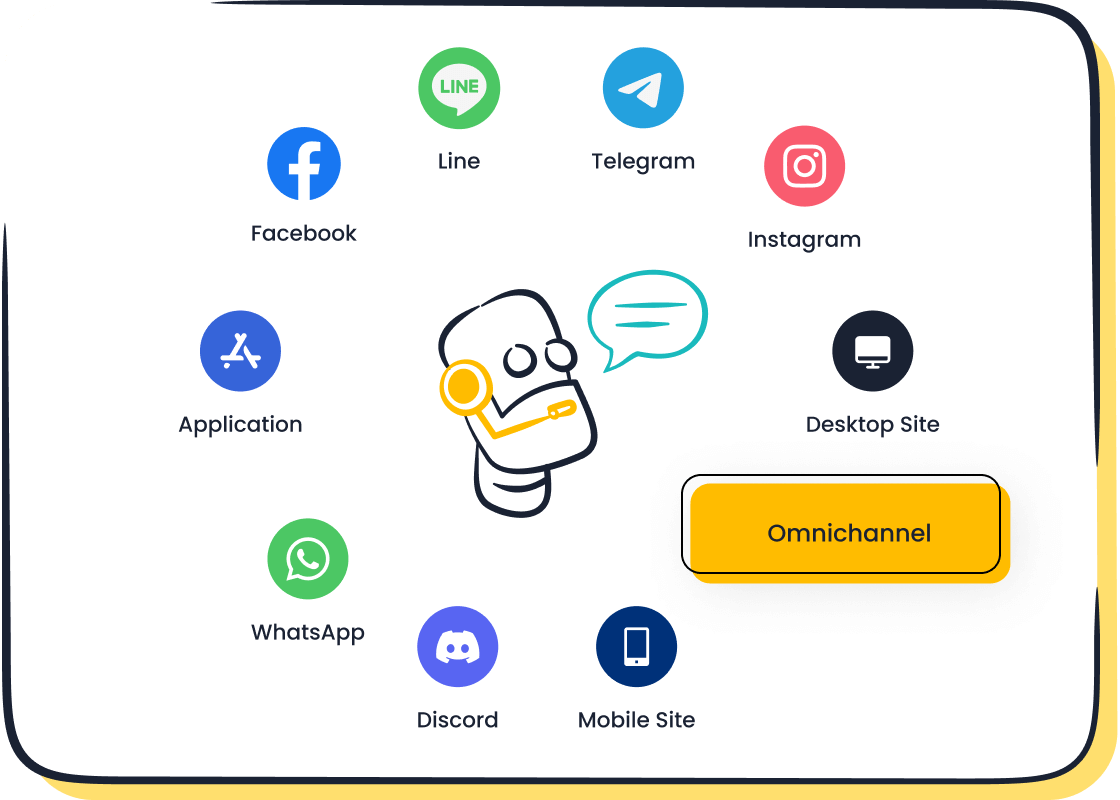
Consistency is the backbone of exceptional customer service. When you use a script for customer service representatives, it ensures that every customer receives the same high-quality support, regardless of the channel or agent they interact with. This consistency builds trust and creates a seamless experience for customers. For example, Sobot’s AI-powered chatbot integrates scripts with positive scripting techniques, enabling agents to deliver unified responses across platforms like WhatsApp, email, and live chat.
Here’s how scripts enhance consistency:
| Benefit | Description |
|---|---|
| Consistent Support Messaging | Provides unified responses across all channels, building trust and delivering a seamless customer experience. |
| Ensures SOP Adherence | Delivers guided knowledge to agents, reducing errors and enhancing service delivery. |
By maintaining a professional tone and accurate responses, scripts contribute to higher customer satisfaction and engagement.
Reducing Training Time for New Representatives
Training new agents can be time-consuming, but customer service scripts simplify the process. Pre-designed scripts act as a roadmap, guiding representatives through common scenarios and reducing the time it takes to become proficient. With tools like Sobot’s AI chatbot, new agents can access scenario-based scripts tailored to specific industries, such as retail or financial services.
Scripts empower agents to handle interactions effectively from day one. They also reduce the need for extensive training sessions, saving time and resources. For instance, OPPO, a global smart device leader, achieved a 90% reduction in knowledge base maintenance efforts by integrating Sobot’s solutions. This streamlined approach not only boosts efficiency but also ensures consistent service quality across all interactions.
Enhancing Multichannel Communication Strategies
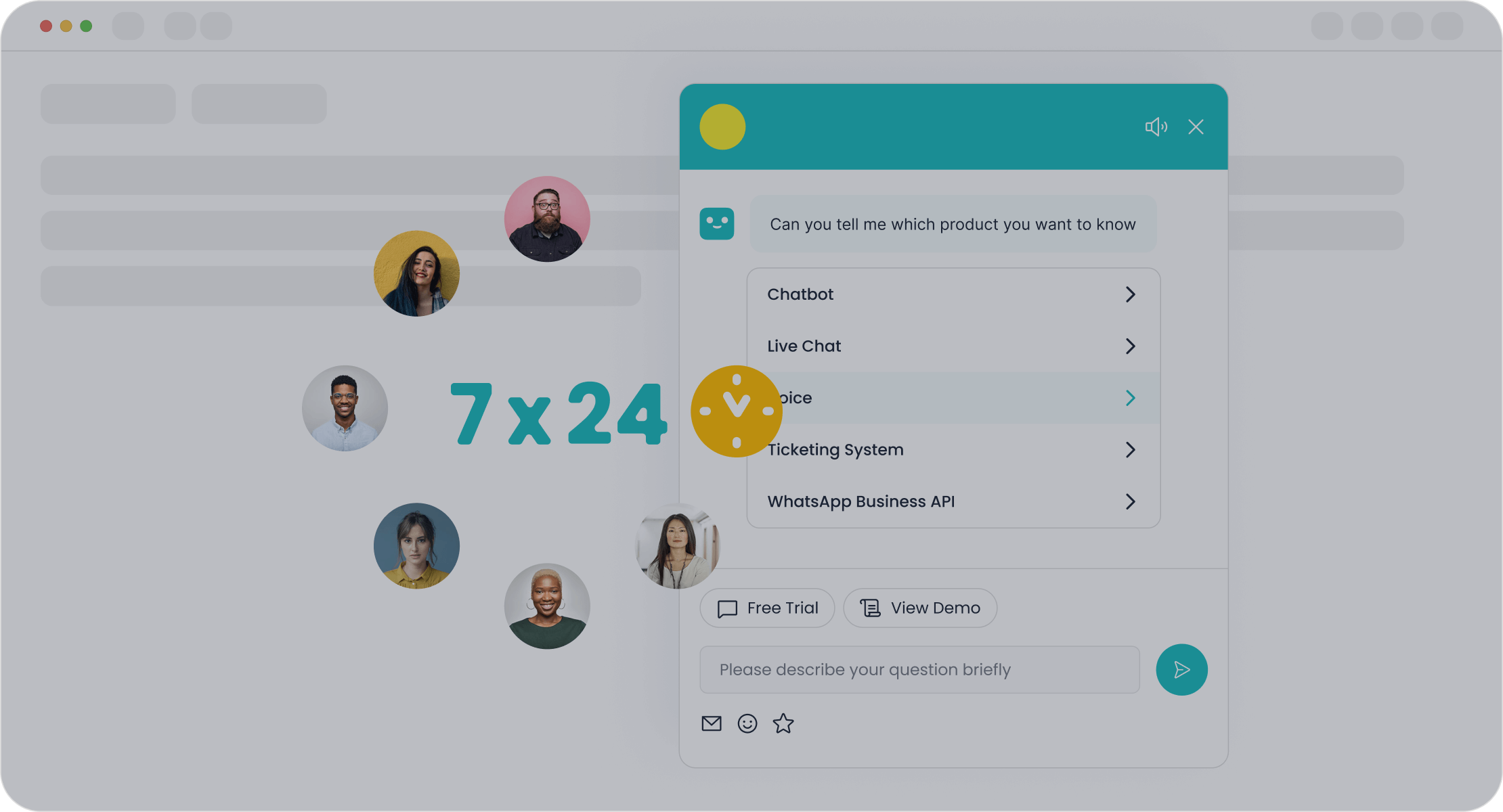
In today’s omnichannel world, customers expect seamless communication across platforms. Scripts play a vital role in enhancing multichannel strategies by ensuring message consistency and synergy. When integrated with AI tools like Sobot’s chatbot, scripts enable businesses to deliver personalized support across channels such as social media, SMS, and live chat.
| Aspect | Description |
|---|---|
| Message Consistency | A unified brand message across channels fosters trust and recognition, influencing consumer behavior. |
| Channel Synergy | The combined effect of multiple channels reinforces marketing messages, amplifying engagement impact. |
For example, Sobot’s omnichannel solutions allow businesses to blend marketing and support efforts, creating a cohesive customer experience. This integration not only improves customer satisfaction but also drives higher engagement rates, making it a key component of customer service best practices in 2025.
Improving Resolution Times and Efficiency
When it comes to customer service, speed matters. You’ve probably experienced the frustration of waiting too long for a resolution. That’s why improving resolution times is key to delivering high-quality service and keeping customers happy. Faster resolutions don’t just save time—they also build trust and loyalty.
Here’s the thing: customers value efficiency. In fact, 19% of them are willing to pay more for immediate service that eliminates waiting. By focusing on operational processes and employee training, you can resolve issues quicker and enhance the overall experience. For example, Sobot’s AI-powered chatbot handles repetitive queries instantly, freeing up human agents to tackle more complex problems. This approach boosts productivity by 70% and ensures customers get the support they need without delays.
Tip: Use customer feedback to identify bottlenecks in your operations. Streamlining these areas can lead to faster resolutions and happier customers.
Let’s look at the numbers:
| Statistic | Insight |
|---|---|
| 94% of consumers | Likely to repeat purchases from companies offering superior customer service. |
| 37% of global respondents | Left their mobile operator due to poor service quality. |
| 19% more | Customers are willing to pay for 'always immediate service' that eliminates waiting. |
These stats show how resolution times directly impact customer loyalty and satisfaction. When you prioritize efficiency, you’re not just solving problems—you’re creating lasting relationships.
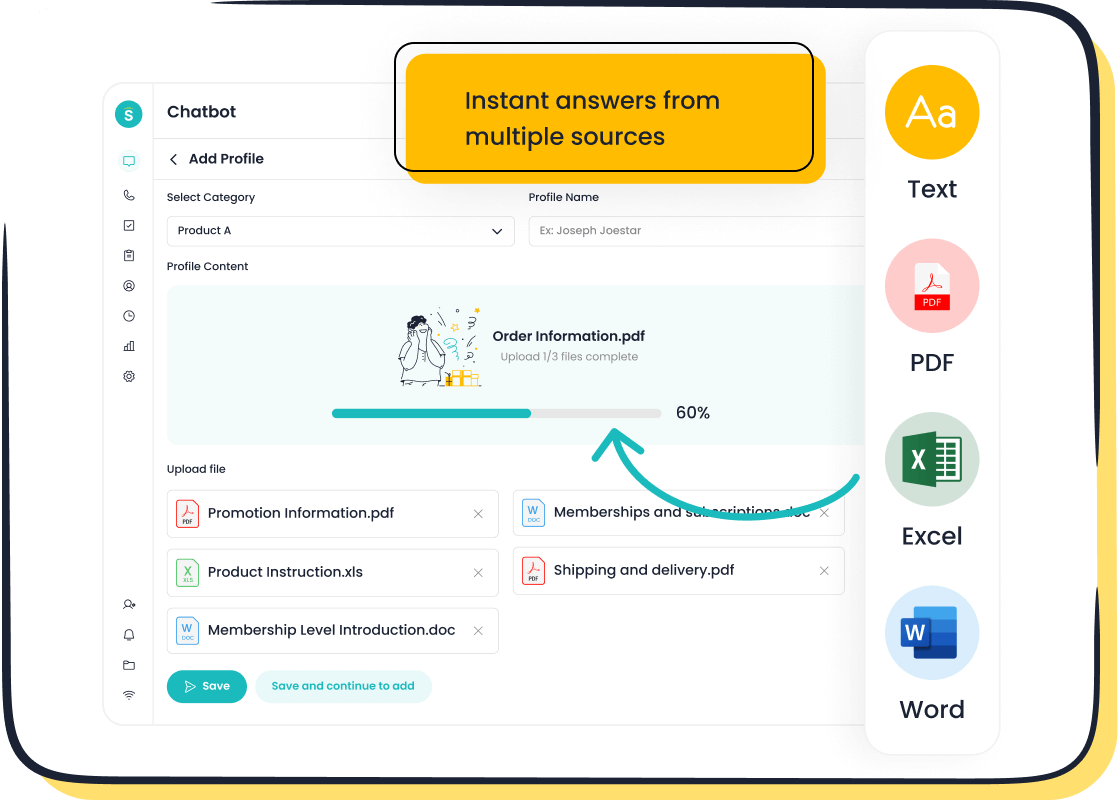
Sobot’s solutions make this easier. With tools like its omnichannel AI chatbot, you can provide seamless interactions across platforms like WhatsApp, email, and live chat. The chatbot operates 24/7, ensuring customers always have access to immediate support. Plus, its ability to integrate with CRM systems means agents can access customer histories in real time, speeding up resolutions even further.
By adopting strategies that improve resolution times, you’ll not only enhance service quality but also strengthen your brand’s reputation. After all, happy customers are loyal customers—and they’re the ones who keep coming back.
Customer Service Best Practices for Script Creation and Usage
Prioritize Personalization and Adaptability
When it comes to creating customer service scripts, personalization and adaptability are game-changers. Customers don’t want to feel like just another number—they want to feel valued. By tailoring scripts to individual needs and adapting them in real time, you can create a more meaningful experience. For instance, integrating CRM systems with your scripts allows agents to access customer histories instantly. This helps them offer personalized solutions that resonate with the customer.
Here’s why personalization matters:
- 76% of consumers are more likely to buy from brands that offer personalized experiences.
- Metrics like Customer Satisfaction Score (CSAT) and Net Promoter Score (NPS) often improve when scripts are adaptable.
| KPI | Description |
|---|---|
| Customer Satisfaction Score | Direct feedback from customers post-interaction gives insight into their satisfaction levels. |
| Net Promoter Score | Measures customer loyalty and their likelihood to recommend your brand. |
| Customer Retention Rate | Indicates how many customers return after their initial purchase, reflecting successful personalization. |
Sobot’s omnichannel AI chatbot is a great example of how technology can enhance personalization. It uses customer data to provide tailored responses across platforms like WhatsApp and live chat. This not only improves customer satisfaction but also boosts retention by creating a seamless, personalized experience.
Incorporate Positive Scripting Techniques
Positive scripting is all about focusing on solutions rather than problems. It’s a simple yet powerful way to turn potentially negative interactions into positive ones. For example, instead of saying, “We can’t do that,” you could say, “Here’s what we can do for you.” This subtle shift in language can make a big difference in how customers perceive your service.
Why does positive scripting work?
- It helps agents guide conversations toward goals like repeat purchases or upselling.
- It emphasizes solutions, which builds trust and loyalty.
- It can even de-escalate tense situations, easing customer frustrations.
Imagine a customer calling about a delayed order. Instead of focusing on the delay, a positive script might say, “I understand how important this is to you. Let me check the status and ensure it gets to you as quickly as possible.” This approach shows empathy and a focus on solutions, which can turn a frustrating situation into a positive experience.

Sobot’s AI-powered chatbot takes positive scripting to the next level. It uses pre-designed templates that guide agents in maintaining a friendly and constructive tone. This ensures consistent, high-quality interactions across all channels, helping you deliver exceptional customer service every time.
Use Clear and Conversational Language
Nobody likes jargon or robotic responses. That’s why using clear and conversational language in your scripts is so important. When customers reach out for support, they want to feel like they’re talking to a real person who understands their needs.
Here are some tips for keeping your scripts conversational:
- Use simple, everyday language. Avoid technical terms unless absolutely necessary.
- Break down complex information into bite-sized pieces.
- Add a touch of warmth to your tone. Phrases like “I’m here to help” or “Let’s figure this out together” can make a big difference.
For example, instead of saying, “Your query has been escalated to the relevant department,” you could say, “I’ve passed your request to our team, and they’ll get back to you shortly.” This small change makes the interaction feel more human and approachable.
Sobot’s chatbot excels in this area by using natural language processing (NLP) to craft responses that feel conversational and engaging. Whether it’s answering FAQs or guiding customers through complex processes, the chatbot ensures every interaction feels personal and easy to understand.
By focusing on personalization, positive scripting, and clear language, you can create customer service scripts that not only solve problems but also build lasting relationships. These practices are essential for delivering proactive support and maintaining customer loyalty in 2025 and beyond.
Regularly Update Scripts Based on Feedback
Customer service scripts aren’t static—they’re living tools that need regular updates to stay effective. Feedback from customers and agents is like gold. It gives you insights into what’s working and what needs improvement. By acting on this feedback, you can refine your scripts to deliver better service and boost customer satisfaction.
Here’s why updating scripts matters:
-
Customer Expectations Change
Customers evolve. Their needs, preferences, and expectations shift over time. A script that worked last year might feel outdated today. Regular updates ensure your scripts align with current trends and customer demands. For example, if customers start preferring WhatsApp for support, your script should reflect that shift. -
Feedback Highlights Blind Spots
Feedback often uncovers issues you didn’t know existed. Maybe customers feel your responses lack empathy, or agents struggle with overly complex scripts. By addressing these blind spots, you can create scripts that are more intuitive and customer-focused. -
Improved Retention and Loyalty
When scripts adapt to customer feedback, they create better experiences. Happy customers stick around. They’re more likely to return and recommend your brand to others. This builds customer loyalty and retention, which are critical for long-term success.

Tip: Use surveys and post-interaction reviews to gather feedback. Tools like Sobot’s omnichannel AI chatbot can help collect and analyze this data, making it easier to identify areas for improvement.
How to Update Scripts Effectively
Updating scripts isn’t just about tweaking a few lines. It’s a process that requires strategy and focus. Here’s how you can do it:
-
Analyze Feedback Regularly
Don’t wait for complaints to pile up. Review feedback consistently to spot trends and recurring issues. For instance, if customers frequently mention delays in resolution, your script might need adjustments to streamline interactions. -
Test Changes Before Full Implementation
Before rolling out updates, test them in real scenarios. This helps you see how the changes impact service quality and customer satisfaction. A/B testing can be a great way to compare old and new scripts. -
Leverage Automation for Updates
Automation tools like Sobot’s AI chatbot simplify the process. They can analyze customer interactions and suggest script improvements based on data. This saves time and ensures your scripts stay relevant. -
Collaborate Across Teams
Involve agents, managers, and even marketing teams in the update process. Their perspectives can help you create scripts that are not only effective but also aligned with your brand voice.
Real-World Example: OPPO’s Success
Take OPPO, for instance. The company faced challenges with outdated scripts during peak shopping periods. By partnering with Sobot, they optimized their knowledge base and updated their scripts based on customer feedback. The result? An 83% chatbot resolution rate and a 94% positive feedback rate. These updates didn’t just improve service—they boosted customer satisfaction and repurchase rates by 57%.
The Bottom Line
Regularly updating your scripts isn’t just a nice-to-have—it’s a must. It keeps your service fresh, relevant, and customer-centric. When you focus on solutions and use feedback as your guide, you create scripts that enhance interactions and build lasting relationships.
Sobot’s tools make this process easier. With features like omnichannel support and AI-driven insights, you can gather feedback, analyze it, and implement updates seamlessly. This proactive approach ensures your scripts stay ahead of the curve, delivering quality service every time.
Leveraging AI and Automation for Customer Service Scripts

Dynamic Script Generation with AI Tools
Imagine having a tool that creates scripts on the fly, tailored to each customer’s unique situation. That’s exactly what AI tools bring to the table. These tools analyze customer interactions in real time, helping you adjust your approach instantly. For example, if a customer seems frustrated, the AI can suggest empathetic responses to de-escalate the situation.
This dynamic approach doesn’t just improve responsiveness—it transforms the entire customer experience. You can address issues as they arise, making every interaction feel personal and proactive. Plus, AI tools identify trends and areas for improvement, so your team gets better with every conversation.
Here’s why dynamic script generation is a game-changer:
- It enables real-time adjustments based on customer behavior.
- It enhances customer satisfaction by providing tailored solutions.
- It empowers agents to meet customer needs more effectively.
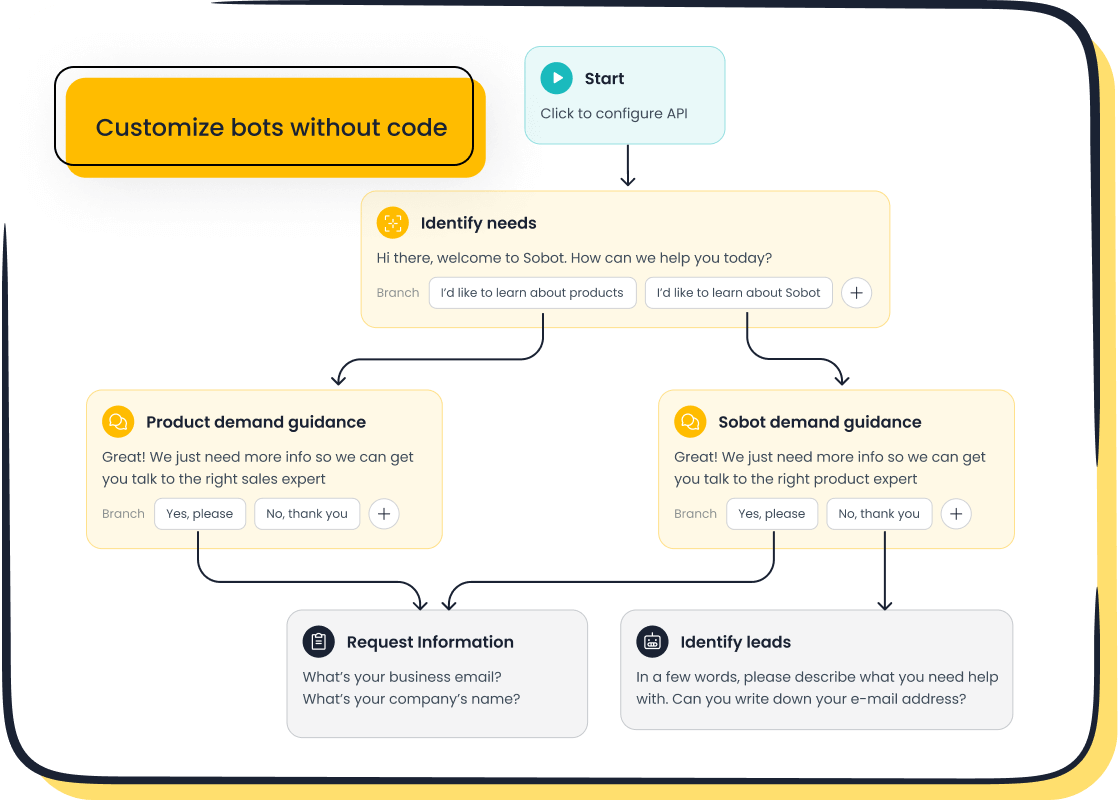
By integrating AI tools like Sobot’s omnichannel chatbot, you can take this to the next level. The chatbot uses advanced algorithms to craft scripts that align with your brand voice while adapting to customer preferences. This ensures every interaction feels seamless and personalized, no matter the channel.
Automating Routine Interactions Using Sobot Chatbot
Let’s face it—routine queries can bog down your team. Questions like “What’s my order status?” or “How do I reset my password?” don’t need a human touch. That’s where automation steps in. With tools like the Sobot AI chatbot, you can handle these repetitive tasks effortlessly.
The chatbot operates 24/7, providing instant support to customers across platforms like WhatsApp, email, and live chat. It’s multilingual, so it can interact with customers in their preferred language. And the best part? It doesn’t just answer questions—it learns from every interaction. This means it gets smarter over time, improving its ability to assist.
Here’s how Sobot’s chatbot adds value:
- It boosts efficiency by solving up to 70% of routine queries autonomously.
- It cuts costs by reducing the need for additional agents.
- It enhances the customer experience by offering quick, accurate responses.
Take OPPO, for example. By implementing Sobot’s chatbot, they achieved an 83% resolution rate for routine queries. This freed up their agents to focus on more complex issues, improving overall service quality.
Tip: Use automation to handle the basics, so your team can focus on delivering exceptional service where it matters most.
Optimizing Script Performance with Data Analytics
Data is your secret weapon for better scripts. By analyzing customer feedback and interaction data, you can pinpoint what’s working and what’s not. This helps you refine your scripts to meet customer expectations more effectively.
For instance, analytics can reveal recurring pain points in your service. Maybe customers frequently mention long wait times or unclear instructions. By addressing these issues, you can create scripts that resolve problems faster and improve satisfaction.
Here’s what data analytics can do for you:
- Improve customer experience: 94% of customers say a good service experience makes them more likely to return.
- Identify pain points: Feedback analysis highlights areas for improvement, leading to better interactions.
- Boost operational efficiency: Data helps balance speed and quality, making your team more effective.
Companies like Windstream Holdings and AutoNation have seen impressive results by leveraging analytics. Windstream reduced its cost per acquisition by 17%, while AutoNation improved agent performance with real-time feedback.
Sobot’s AI solutions make this process seamless. The platform provides detailed reports on script performance, helping you identify trends and optimize your approach. With these insights, you can continuously refine your scripts to deliver top-notch service every time.
Note: Don’t just collect data—use it. The insights you gain can transform your scripts and elevate your customer service to new heights.
Integrating Voice Recognition and Sentiment Analysis
Voice recognition and sentiment analysis are revolutionizing customer service in 2025. These technologies allow you to understand not just what your customers are saying but how they feel. By combining these tools, you can create a more empathetic and efficient support system that enhances the overall customer experience.
Voice recognition, powered by Automatic Speech Recognition (ASR) technology, enables you to monitor and analyze 100% of customer interactions. This means you’re no longer limited to sampling a fraction of calls for quality checks. Instead, you gain a complete picture of your service performance. For example, ASR can identify recurring issues in real-time, helping you address them proactively. This level of insight ensures your team delivers consistent, high-quality support across all channels.
Sentiment analysis takes things a step further by evaluating the emotional tone of conversations. Imagine being able to detect frustration or satisfaction in a customer’s voice instantly. Tools like Level AI use a sentiment score to measure emotional intensity, giving you actionable insights to improve interactions. For instance, a financial institution used sentiment analysis to identify cancellation trends, saving over $3 million by optimizing their IVR system. These insights go beyond traditional surveys, offering a deeper understanding of customer needs and pain points.
Sobot’s omnichannel AI solutions integrate voice recognition and sentiment analysis seamlessly. With features like real-time speech recognition and sentiment tracking, Sobot helps you deliver personalized and proactive support. Whether it’s resolving a complaint or upselling a product, these tools empower your agents to respond with empathy and precision. Plus, Sobot’s AI copilots assist agents by summarizing conversations and suggesting next steps, ensuring every interaction feels tailored and efficient.
By leveraging these technologies, you’re not just improving service quality—you’re building stronger relationships with your customers. They’ll feel heard, valued, and understood, which translates to higher satisfaction and loyalty. In today’s competitive landscape, that’s a game-changer.
Tip: Use sentiment analysis to identify trends in customer feedback. This can help you refine your scripts and address issues before they escalate.
Examples of Effective Customer Service Scripts
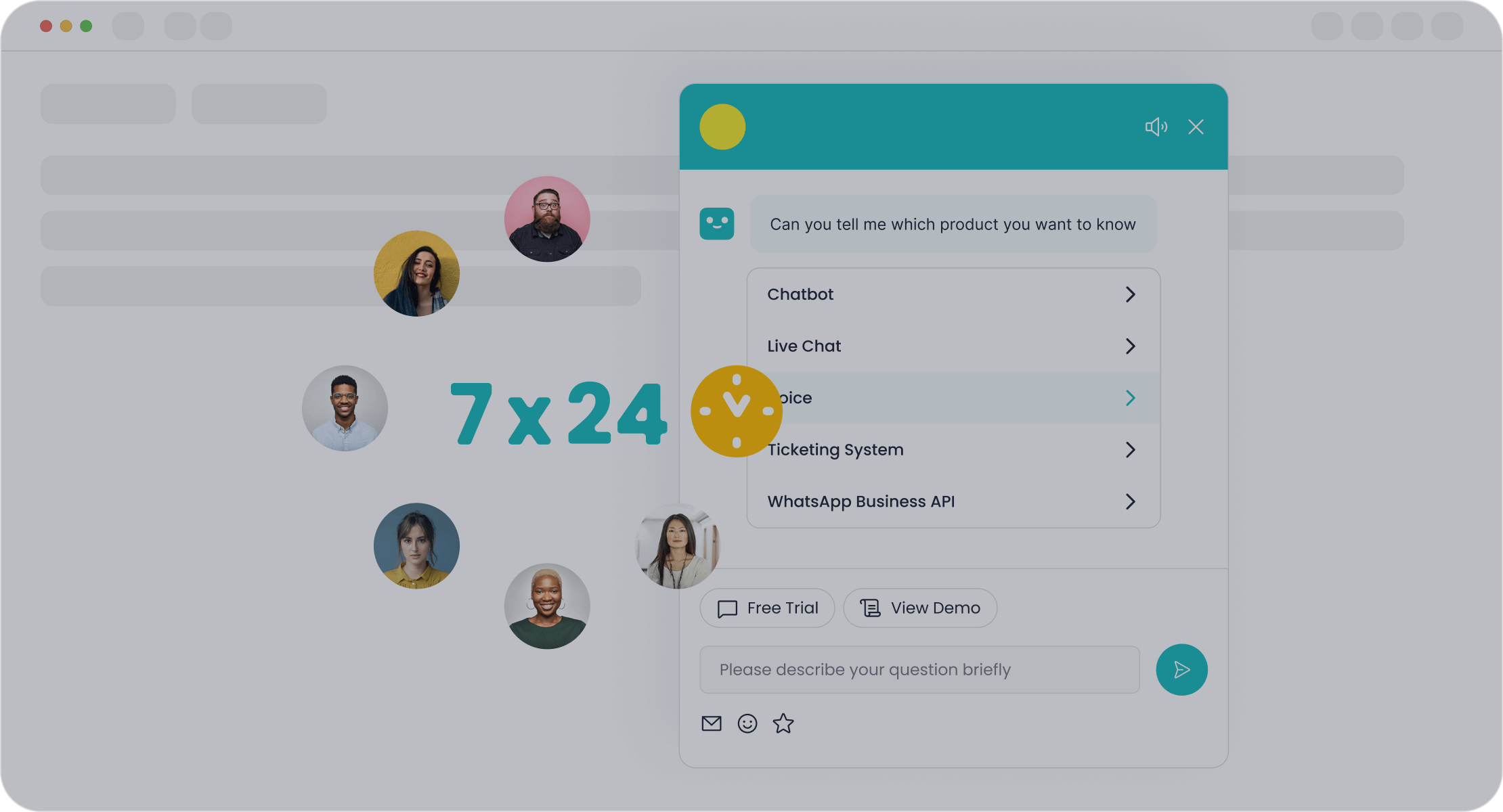
Handling Complaints with Empathy and Resolution
Handling complaints effectively can turn unhappy customers into loyal advocates. The key lies in showing empathy and offering a resolution quickly. For instance, companies like Zappos and Marriott have mastered this by training their teams to anticipate emotional needs and engage in meaningful conversations. Zappos representatives often spend extra time with customers, creating a bond that fosters loyalty.
Here’s how you can handle complaints with empathy:
- Acknowledge the issue: Start by validating the customer’s feelings. A simple “I understand how frustrating this must be” can go a long way.
- Offer a solution: Focus on what you can do to resolve the problem. For example, Warby Parker’s hassle-free return policies ensure quick resolutions, boosting satisfaction.
- Follow up: After resolving the issue, check in to ensure the customer feels valued.
| Company | Evidence of Empathy and Resolution |
|---|---|
| Zappos | Representatives engage in long conversations, fostering strong customer loyalty. |
| Marriott | Staff anticipate emotional needs, enhancing guest experience through personalized interactions. |
| Warby Parker | Hassle-free return policies ensure prompt resolution of customer issues, leading to higher satisfaction. |
| Airbnb | Robust support for hosts and guests resolves disputes quickly, maintaining trust and satisfaction. |
Sobot’s AI chatbot can assist by identifying frustrated customers through sentiment analysis and suggesting empathetic responses. This ensures every interaction feels personal and supportive.
Upselling and Cross-Selling in Retail and E-Commerce
Upselling and cross-selling are powerful strategies to boost revenue while enhancing the customer experience. Upselling encourages customers to choose premium products, while cross-selling introduces complementary items. Amazon’s success highlights the effectiveness of these techniques, with cross-selling alone generating over 35% of its revenue.
Here’s why these strategies work:
- Higher Average Order Value (AOV): Suggesting add-ons or upgrades increases the total purchase amount.
- Improved Customer Lifetime Value (CLV): Relevant recommendations encourage repeat purchases.
- Enhanced Customer Experience: Tailored suggestions align with customer preferences, making them feel understood.
| Benefit | Description |
|---|---|
| Higher Average Order Value (AOV) | Encourages customers to add more to their orders, directly impacting revenue. |
| Revenue Growth | Cross-selling alone generated over 35% of Amazon’s revenue, showcasing its effectiveness. |
| Higher Customer Lifetime Value | Upselling and cross-selling increase the likelihood of repeat purchases, enhancing overall value. |
| Increase of ROI | Higher AOV and CLV lead to improved ROI compared to customer acquisition costs. |
Sobot’s AI solutions make upselling and cross-selling seamless. The chatbot uses customer data to recommend products in real time, boosting conversions by 20%. This not only increases revenue but also strengthens customer relationships.
Managing Technical Support Calls with Sobot AI Solutions
Technical support calls often involve complex issues that require clear communication and quick resolutions. Scripts play a vital role here by guiding agents through troubleshooting steps. They ensure consistency and improve first-call resolution rates.
For example, Sobot’s AI-powered solutions streamline technical support by integrating voice recognition and sentiment analysis. These tools help agents identify the root cause of issues faster. The AI copilots assist by summarizing conversations and suggesting next steps, ensuring high-quality support.
Here’s how Sobot enhances technical support:
- 24/7 Availability: The chatbot handles routine queries, freeing agents for complex problems.
- Real-Time Insights: Voice recognition identifies recurring issues, enabling proactive solutions.
- Improved Efficiency: Agents resolve issues faster with AI copilots providing real-time guidance.
By using Sobot’s solutions, you can deliver consistent, high-quality technical support that keeps customers satisfied and loyal.
Providing Proactive Support in Subscription Services
Proactive support is a game-changer for subscription services. Instead of waiting for customers to reach out with problems, you can anticipate their needs and address potential issues before they even arise. This approach not only improves the customer experience but also strengthens loyalty and retention.
Think about it—when you solve problems before they escalate, customers feel valued and understood. For example, sending reminders about upcoming subscription renewals or offering tips on how to maximize the value of a service can make a big difference. It shows that you care about their experience, not just their payment.
Here’s why proactive support works so well:
- It enhances the customer experience by solving issues early.
- It reduces the number of reactive tickets, saving time for both you and your customers.
- It builds loyalty, which drives repeat business and sales.
Did you know that 70% of organizations now invest in technologies to analyze customer intent signals? This helps them anticipate needs and deliver better service. Higher satisfaction levels lead to increased retention, which is critical for subscription-based businesses.
Sobot’s AI-powered chatbot is a perfect tool for proactive support. It operates 24/7, sending personalized notifications and reminders to customers. For instance, it can alert them about expiring subscriptions or suggest upgrades based on their usage patterns. This kind of proactive engagement not only improves service quality but also creates meaningful interactions that keep customers coming back.
By focusing on proactive support, you’re not just solving problems—you’re building relationships. Customers who feel cared for are more likely to stick around, recommend your service, and even explore additional offerings. That’s the power of being one step ahead.
Tips for Continuous Improvement of Customer Service Scripts
Collect Feedback from Customers and Agents
Feedback is the lifeblood of improvement. You can’t refine your customer service scripts without knowing what works and what doesn’t. Customers often provide valuable insights into how your service can better meet their needs. Agents, on the other hand, are your frontline experts. They know the challenges of handling interactions and can pinpoint areas where scripts fall short.
Here’s how you can gather feedback effectively:
- Customer Surveys: Ask customers about their experience after each interaction. Tools like Sobot’s omnichannel AI chatbot can automate this process, collecting feedback across platforms like WhatsApp and live chat.
- Agent Reviews: Hold regular sessions where agents share their thoughts on script usability. Their input can highlight operational challenges and suggest practical solutions.
- Analyze Trends: Look for recurring themes in feedback. If multiple customers mention unclear instructions, it’s time to simplify your scripts.
Employee feedback is especially crucial. It helps you identify blind spots and adapt scripts to changing needs. By integrating feedback into your daily operations, you’ll ensure your scripts evolve alongside customer expectations.
Conduct Regular Testing and Performance Reviews
Testing isn’t just for new scripts—it’s an ongoing process. Regular reviews help you spot weaknesses and refine your approach. For example, A/B testing can show which version of a script delivers better results. Performance reviews, on the other hand, provide a snapshot of how well your scripts support customer interactions.
Here’s how to make testing effective:
- Simulate Real Scenarios: Test scripts in mock interactions to see how they perform under pressure.
- Monitor Key Metrics: Track metrics like resolution time and customer satisfaction. If numbers dip, it’s time to tweak your scripts.
- Leverage AI Insights: Use tools like Sobot’s AI solutions to analyze script performance. The platform provides detailed reports, helping you identify trends and optimize your approach.
Continuous testing ensures your scripts stay sharp and relevant. It’s not just about fixing problems—it’s about delivering consistent, high-quality service that keeps customers coming back.
Stay Updated on Industry Trends and Customer Expectations
The business world moves fast, and customer expectations evolve just as quickly. Staying ahead means keeping an eye on emerging trends and adapting your scripts accordingly. Market research plays a big role here. It helps you understand consumer preferences and align your strategies with industry dynamics.
For example, the rise of omnichannel communication has made seamless support across platforms a must. Customers now expect personalized interactions whether they’re chatting on WhatsApp or emailing your team. Sobot’s AI-powered chatbot excels in this area, offering tailored responses across multiple channels.
By staying updated, you’ll ensure your scripts reflect current trends and deliver the experience customers crave. This proactive approach doesn’t just improve service—it strengthens your brand’s reputation and builds loyalty.
Tip: Subscribe to industry newsletters or attend webinars to stay informed. The insights you gain can transform your scripts and elevate your customer service quality.
Collaborate Across Teams to Refine Scripts
Refining customer service scripts isn’t a one-person job. It takes teamwork to create scripts that truly resonate with your customers. When different teams collaborate, they bring unique perspectives that help you identify gaps and improve the overall quality of your service.
Here’s why collaboration matters:
-
Sales Teams Know the Customer’s Journey
Sales teams interact with customers daily. They understand common objections and know what works during conversations. By sharing their insights, they help refine scripts to address customer concerns more effectively. -
Marketing Teams Understand Brand Voice
Marketing teams ensure your scripts align with your brand’s tone and messaging. Their input guarantees that every interaction feels consistent and professional. -
Customer Support Teams Spot Pain Points
Support teams deal with customer frustrations firsthand. They know which parts of the script confuse customers or slow down resolutions. Their feedback helps you simplify and streamline your scripts.
AI tools make collaboration even more impactful. For example, Sobot’s AI solutions analyze past interactions, revealing trends and common objections. These insights guide teams in adjusting scripts to improve customer engagement. Imagine a scenario where sales calls consistently show customers hesitating over pricing. With AI-driven data, your team can tweak scripts to address this hesitation upfront, boosting conversions.
Collaboration also fosters innovation. When teams work together, they brainstorm creative ways to enhance the customer experience. For instance, combining marketing’s storytelling skills with support’s empathy creates scripts that feel both engaging and helpful.
Tip: Schedule regular cross-team meetings to review script performance. Use tools like Sobot’s omnichannel platform to gather data and track improvements.
By involving multiple teams, you ensure your scripts evolve to meet customer expectations. This approach doesn’t just improve service—it builds stronger relationships with your customers.
Customer service scripts in 2025 are more than just conversation guides—they’re tools for building trust and loyalty. By following best practices like personalization, adaptability, and regular updates, you can create scripts that enhance support and foster lasting relationships. Superior service experiences can even increase customer lifetime value by up to 14 times compared to detractors.
AI-powered tools like Sobot Chatbot make this process seamless. They help you craft dynamic, data-driven scripts that adapt to each customer’s needs. With features like 24/7 availability and sentiment analysis, these tools ensure every interaction feels personal and efficient.
The future of customer service lies in continuous improvement. By staying flexible and customer-focused, you’ll not only meet expectations but exceed them. After all, happy customers are the foundation of long-term success.
FAQ
What makes customer service scripts effective in 2025?
Effective scripts focus on personalization, adaptability, and clarity. They integrate with tools like Sobot’s AI chatbot to provide real-time insights and tailored responses. For example, Sobot’s chatbot boosts productivity by 70% and ensures consistent, high-quality interactions across channels like WhatsApp and live chat.
How can AI improve customer service scripts?
AI tools like Sobot’s chatbot analyze customer interactions to generate dynamic, personalized scripts. They also automate routine queries, saving time and cutting costs by up to 50%. This allows your team to focus on complex issues while ensuring customers receive fast, accurate support.
Why is personalization important in customer service scripts?
Personalization makes customers feel valued. Scripts that adapt to individual needs improve satisfaction and loyalty. For instance, Sobot’s omnichannel solutions use customer data to craft tailored responses, boosting retention rates and creating a seamless experience across platforms.
How often should you update customer service scripts?
You should update scripts regularly based on customer and agent feedback. Tools like Sobot’s AI solutions simplify this process by analyzing interaction data and suggesting improvements. Regular updates ensure your scripts stay relevant and aligned with evolving customer expectations.
Can automation replace human agents in customer service?
Automation complements, but doesn’t replace, human agents. Tools like Sobot’s chatbot handle routine queries, freeing agents to focus on complex issues. This balance improves efficiency and ensures customers receive both quick resolutions and empathetic, human support when needed.
See Also
Essential Strategies for Effective Call Center Quality Control
Ten Strategies to Enhance Customer Satisfaction via Live Chat
Enhance SaaS Customer Support Using Live Chat Techniques
The Leading Customer Service Software Options for 2024
A Comprehensive Guide to Call Center Quality Management Systems
